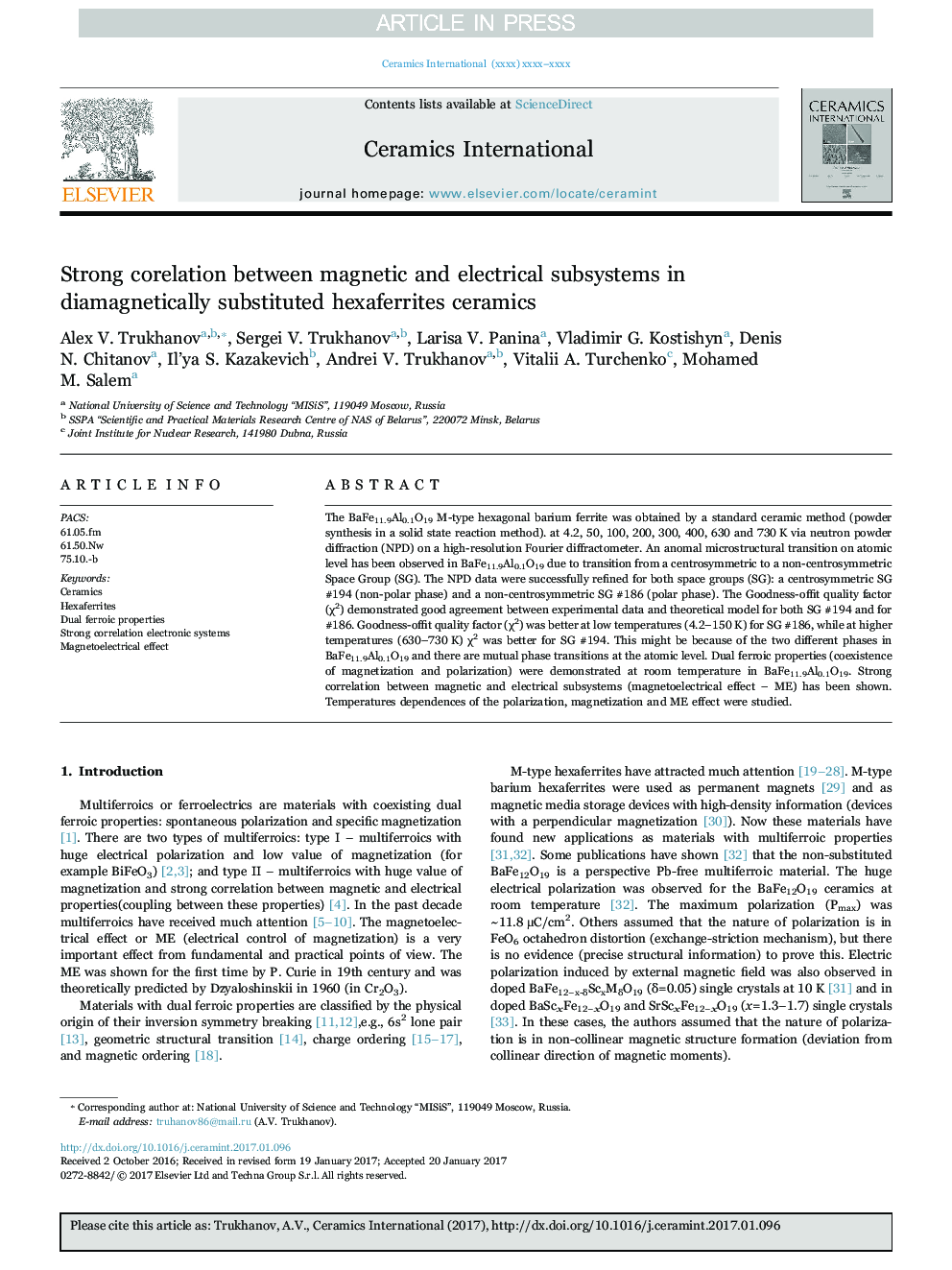| Article ID | Journal | Published Year | Pages | File Type |
|---|---|---|---|---|
| 5437572 | Ceramics International | 2017 | 7 Pages |
Abstract
The BaFe11.9Al0.1O19 M-type hexagonal barium ferrite was obtained by a standard ceramic method (powder synthesis in a solid state reaction method). at 4.2, 50, 100, 200, 300, 400, 630 and 730Â K via neutron powder diffraction (NPD) on a high-resolution Fourier diffractometer. An anomal microstructural transition on atomic level has been observed in BaFe11.9Al0.1O19 due to transition from a centrosymmetric to a non-centrosymmetric Space Group (SG). The NPD data were successfully refined for both space groups (SG): a centrosymmetric SG #194 (non-polar phase) and a non-centrosymmetric SG #186 (polar phase). The Goodness-offit quality factor (Ï2) demonstrated good agreement between experimental data and theoretical model for both SG #194 and for #186. Goodness-offit quality factor (Ï2) was better at low temperatures (4.2-150Â K) for SG #186, while at higher temperatures (630-730Â K) Ï2 was better for SG #194. This might be because of the two different phases in BaFe11.9Al0.1O19 and there are mutual phase transitions at the atomic level. Dual ferroic properties (coexistence of magnetization and polarization) were demonstrated at room temperature in BaFe11.9Al0.1O19. Strong correlation between magnetic and electrical subsystems (magnetoelectrical effect - ME) has been shown. Temperatures dependences of the polarization, magnetization and ME effect were studied.
Related Topics
Physical Sciences and Engineering
Materials Science
Ceramics and Composites
Authors
Alex V. Trukhanov, Sergei V. Trukhanov, Larisa V. Panina, Vladimir G. Kostishyn, Denis N. Chitanov, Il'ya S. Kazakevich, Andrei V. Trukhanov, Vitalii A. Turchenko, Mohamed M. Salem,
